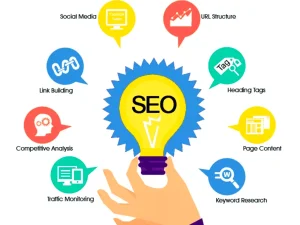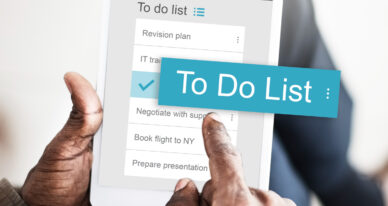20 Steps for Creating A Great Small Business Website
Building a great small business website is crucial for any business that wants to establish an online presence and reach new customers. A well-designed website will not only help you to increase your visibility and credibility, but it will also provide a platform for you to showcase your products or services, and increase consumer loyalty and trust while generating leads and revenues. Here are 20 key steps to building a great small business website:
-
Define Your Audience:
Before you start building your website, it’s essential to clearly understand your target audience. Consider factors such as demographics, interests, and pain points, and use this information to inform your website’s design and content.
-
Choose a Domain Name:
Your domain name is the address that people will use to find your website, so it’s important to choose a domain name that is memorable, easy to spell, and relevant to your business.
-
Choose a Website Builder or Web Development Company:
There are many website builders and web development companies that can help you to create your website. Consider factors such as cost, ease of use, and the level of customization that you require when making your choice.
-
Create a Website Sitemap Diagram:
A sitemap is a diagram that shows the structure and organization of your website. It’s essential to create a sitemap before you start building your website, as it will help you to ensure that your website’s navigation is clear and logical.
-
Design Your Website:
The design of your website is crucial for making a good first impression and creating a positive user experience. Consider factors such as color schemes, typography, and imagery when designing your website.

-
Develop Your Website:
Once your design is complete, it’s time to develop your website. This includes coding the website and implementing any functionality that you require.
-
Create Content:
Your website’s content is crucial for engaging your audience and providing value. Make sure that your website’s content is well-written, informative, and relevant to your target audience.
-
Optimize for Search Engines:
Search engine optimization (SEO) is the process of making your website more visible in search engine results. Optimize your website for search engines by including relevant keywords in your content, meta tags, and URLs, and by building high-quality backlinks.
-
Test and Launch:
Before you launch your website, it’s essential to test it to ensure that it’s functioning correctly and that there are no bugs. Once your website is ready, it’s time to launch it and make it live for the world to see.
-
Monitor and Update:
Your website is a living entity that requires regular monitoring and updating. Use analytics tools like Google Analytics to track your website’s performance and make data-driven decisions about your website’s design, content, and functionality. Continuously monitor and update your website to ensure that it stays up-to-date and relevant.
-
Make Sure Your Website is Responsive:
With an increasing number of people using mobile devices to access the internet, it’s essential to make sure that your website is responsive, meaning it adapts to different screen sizes. This will ensure that your website is easy to navigate and read on any device.
-
Include Calls to Action:
Your website should include calls to action, such as “Contact Us” or “Buy Now,” to encourage visitors to take the next step. These calls to action should be prominently placed and easy to find.
-
Use High-Quality Images:
High-quality images can make a big impact on the overall look and feel of your website. Make sure that all images are of high resolution and relevant to your business.
-
Implement Security Measures:
Security is crucial for any website. Make sure that your website is protected by an SSL certificate and that you have taken measures to protect against hackers and other security threats.
-
Make Sure Your Website is Accessible:
Your website should be accessible to everyone, including people with disabilities. Make sure that your website is compliant with web accessibility guidelines, such as the Web Content Accessibility Guidelines (WCAG).
-
Implement Analytics and Tracking:
Use analytics tools such as Google Analytics to track your website’s performance, including visitor behavior, bounce rates, and conversion rates. This information can be used to make data-driven decisions about your website’s design, content, and functionality.
-
Use A/B Testing:
A/B testing is a technique that allows you to test different versions of your website to see which one performs better. This can be useful for testing different design elements, calls to action, and other elements of your website.
-
Optimize for Speed:
A slow-loading website can be frustrating for visitors and can negatively impact your search engine rankings. Optimize your website for speed by compressing images, using a content delivery network, and minimizing the number of redirects.
-
Create a Blog:
Blogging is a great way to create fresh, valuable content for your website and to engage with your target audience. Make sure to post regularly and to promote your blog on social media.
-
Integrate with Social Media:
Integrate your website with social media platforms like Facebook, Twitter, and Instagram. This will allow you to promote your business and engage with your customers on multiple platforms.
Conclusion
In conclusion, building a great small business website is crucial for any business that wants to establish an online presence and reach new customers. By following these steps, you can ensure that your website is well-designed, easy to use, and optimized for search engines, which will help you to increase your visibility, credibility, and conversions. Remember that a website is a continuous effort, and you will need to keep it updated, monitor and adjust it as needed.



































































































































